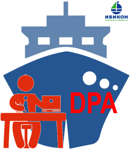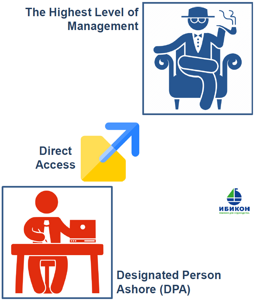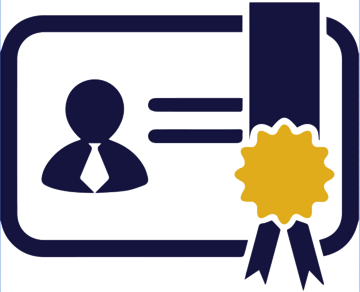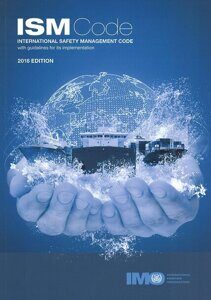 Designated Person Ashore (DPA) 05.05.2024 15:02
Designated Person Ashore (DPA) 05.05.2024 15:02IBICON offers you an overview of the ISM Code requirements related to the designated person ashore.
A key role, as identified by the ISM Code, in the effective implementation of a safety management system is that of the Designated Person. This is the person based ashore whose influence and responsibilities should significantly affect the development and implementation of a safety culture within the Company.
To comply with the ISM Code, the Company should:
designate a person or persons with direct access to the highest level of management who should monitor the safe operation of each ship (section 4).
In accordance with IMO Circular MSC-MEPC.7/Circ.8, p.4.2:
The designated person should verify and monitor all safety and pollution prevention activities in the operation of each ship. This monitoring should include, at least, the following internal processes:
.1 communication and implementation of the safety and environmental protection policy;
.2 evaluation and review of the effectiveness of the safety management system;
.3 reporting and analysis of non-conformities, accidents and hazardous occurrences;
.4 organizing and monitoring of internal audits including verification of independence and training of internal auditors;
.5 appropriate revisions to the SMS; and
.6 ensuring that adequate resources and shore-based support as identified in paragraph 4.3 below are provided by the Company.
To enable the designated person to carry out this role effectively, the Company should provide adequate resources and shore-based support including:
.1 personnel resources;
.2 material resources;
.3 any training required;
.4 clearly defined and documented responsibility and authority; and
.5 authority for reporting non-conformities and observations to the highest level of management.
To comply with the ISM Code, the Company should: ensure that adequate resources and shore-based support are provided to enable the designated person or persons to carry out their functions (section 3.3).
In accordance with IMO Circular MSC-MEPC.7/Circ.6:
Designated Person should have a minimum of formal education as follows:
.1 qualifications from a tertiary institution recognized by the Administration or by the recognized organization, within a relevant field of management, engineering or physical science, or
.2 qualifications and seagoing experience as a certified ship officer pursuant to the International Convention on Standards of Training, Certification and Watchkeeping for Seafarers (STCW), 1978, as amended, or
.3 other formal education combined with not less than three years practical senior level experience in ship management operations.
Designated Person should have undergone training relating to safety management elements in compliance with the requirements of the ISM Code, particularly with regard to:
.1 knowledge and understanding of the ISM Code;
.2 mandatory rules and regulations;
.3 applicable codes, guidelines and standards as appropriate;
.4 assessment techniques of examining, questioning, evaluating and reporting;
.5 technical or operational aspects of safety management;
.6 appropriate knowledge of shipping and shipboard operations;
.7 participation in at least one marine-related management system audit; and
.8 effective communications with shipboard staff and senior management.
Designated Person should have experience to:
.1 present ISM matters to the highest level of management and gain sustained support for safety management system improvements;
.2 determine whether the safety management system elements meet the requirements of the ISM Code;
.3 determine the effectiveness of the safety management system within the Company and the ship by using established principles of internal audit and management review to ensure compliance with rules and regulations;
.4 assess the effectiveness of the safety management system in ensuring compliance with other rules and regulations which are not covered by statutory and classification surveys and enabling verification of compliance with these rules and regulations;
.5 assess whether the safe practices recommended by the Organization, Administrations, classification societies, other international bodies and maritime industry organizations to promote a safety culture had been taken into account; and
.6 gather and analyse data from hazardous occurrences, hazardous situations, near misses, incidents and accidents and apply the lessons learnt to improve the safety management system within the Company and its ships.





